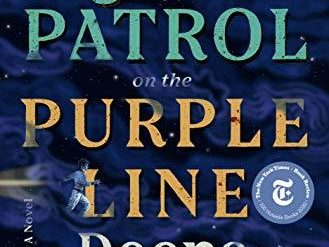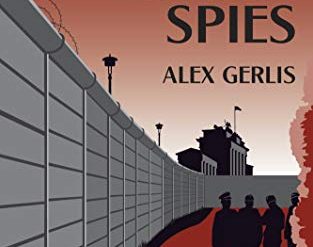
The Virgin in the Ice reveals more about the way English society was organized in the Middle Ages than any of the five books that precede it in the twenty-one-volume series of Brother Cadfael mysteries. The novel’s predecessors all center on a murder or murders that the good monk is called upon to solve (and, of course, cleverly does so). Although a homicide does figure prominently in this story, it’s subordinate to the principal theme which highlights what has been called the Anarchy prevailing in England in the early twelfth century. In a sense, The Virgin in the Ice by Ellis Peters (1913-95) is a tale of organized crime medieval style.
An unsually complex tale
In this unusually complex tale, Brother Cadfael travels to a fraternal monastery to tend to a brother wounded by an outlaw band. There he learns that the outlaws—a small army, really, involving dozens of men—have been raging through the countryside for plunder, rape, and murder. This is organized crime medieval style, in which a rogue knight has gathered about him a veritable army of desperate men.
The Virgin in the Ice (Brother Cadfael #6) by Ellis Peters (1982) 285 pages ★★★★☆
However, at first, Cadfael’s attention is drawn to a less dramatic problem: he discovers the body of a beautiful young woman encased in ice in a stream near where the brother had been attacked. Meanwhile, two teenage nobles have gone missing, and Cadfael becomes embroiled in a protracted and confounding search to find them along with the deputy sheriff of Shropshire, Hugh Beringar. In the end, Cadfael plays a critical role in revealing the outlaws’ hideaway, learns the complicated truth of what happened to the two young nobles, and solves the murder of the “virgin in the ice.”
Civil war, dueling royalty, and rogue barons
Civil war is raging between the adherents of King Stephen (1092-1154) and his cousin, the Holy Roman Empress Maud, otherwise known as Matilda (1102-67). In the Anarchy that results, local barons are striking out on their own, sometimes bargaining for position with both sides, sometimes simply going rogue. Others, too, are seizing the opportunity for plunder that comes with the breakdown of secular authority. One such criminal band operates at will in the far southwestern reaches of the kingdom, along the Welsh border. Its murderous rampage through the countryside is at the heart of this tale.
Sheriffs, barons, castellans, guilds
In those areas where the king’s writ is still enforced, a sheriff represents the highest secular authority in each shire, or county. The sheriff is far more than the law enforcement officer we would expect from today’s usage of the term. His role is more comparable to that of a governor, or county commissioner or administrator. Yet in most parts of England, for most people, the most meaningful secular authority rests in the hands of the local lord, or baron. And his authority in turn is exercised through the castellan who administers each of the castles within his holdings. As England is predominantly rural, most of the population answers to the often capricious orders of these men. Far fewer live in towns, none of them then home to more than London’s 15,000 souls. Within the town’s walls the merchants and skilled craftsmen’s guilds—precursors to the future middle class—were dominant.
Abbots, priors, monks, and bishops
However, parallel to the secular hierarchy is that of the Church, and for many its authority is at least as great as that of the barons and sheriffs and ultimately that of the king. Much of twelfth-century England lived in the shadow of monasteries that followed the Rule of St. Benedict, like that of Brother Cadfael in Shropshire. The most senior monk, the abbot, ruled the monastery, assisted by its prior. Bishops were based in the towns but rarely commanded authority or resources greater than that of the abbots.
For additional reading
You might also enjoy my posts:
- Top 10 mystery and thriller series;
- 20 excellent standalone mysteries and thrillers;
- 5 top novels about private detectives; and
- Two dozen outstanding detective series from around the world.
For an abundance of great mystery stories, go to Top 20 suspenseful detective novels (plus 200 more). And if you’re looking for exciting historical novels, check out Top 10 historical mysteries and thrillers reviewed here (plus 100 others).
And you can always find my most popular reviews, and the most recent ones, plus a guide to this whole site, on the Home Page.



























